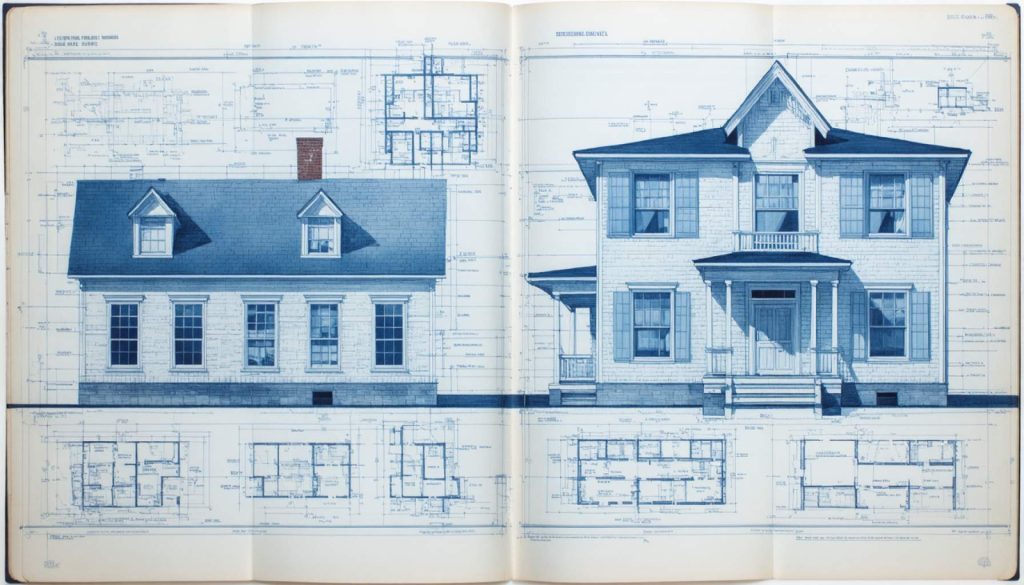
- The Black River Innovation Campus (BRIC) in Springfield, Vermont, is transforming the historic Park Street schoolhouse to boost the local economy.
- The $7.2 million project will convert the building into 23 apartments for entrepreneurs, marrying historical preservation with modern innovation.
- The Actuator program at BRIC is an eight-week initiative that nurtures entrepreneurial talent in areas like software and food manufacturing.
- BRIC supports STEAM education for local youth, evidenced by the rapid expansion of their Lego Robotics programs and summer camps.
- Sister initiative Cultivator expands BRIC’s reach across Vermont, providing training and resources to foster a statewide entrepreneurial ecosystem.
- The revival of the former school signals a deep commitment to sustainable growth, intertwining historical appreciation with future innovation.
In the heart of Springfield, Vermont, an ambitious transformation is unfolding—a merger of history and innovation that promises to energize the local economy. The Black River Innovation Campus (BRIC), a nonprofit dedicated to cultivating tech-driven entrepreneurs, is mid-stream in the $7.2 million reinvention of Springfield’s iconic Park Street schoolhouse. Built in 1895 and expanded in 1929, the building was once a beacon of education, and now, its labyrinthine halls and ornate woodwork are being revitalized to harbor the dreams of new ventures.
The visionary behind this project, Executive Director Vin Fusca, likens the effort to creating a “blank canvas” for budding entrepreneurs. Plans for the venerable schoolhouse include modern updates necessary to convert the space into 23 market-rate apartments, specifically designed to cater to the influx of entrepreneurs who will benefit from BRIC’s ecosystem. However, like any grand project attempting an intricate dance between preserving history and embracing modernity, the challenge remains financial viability—a puzzle that Fusca is eager to solve.
But the story of BRIC is more than its bricks and mortar. At its core, BRIC pulses with life by nurturing entrepreneurial spirit through its rigorous Actuator program, an eight-week journey that alumni describe as transformative. From software development to food manufacturing, these programs draw participants from bustling metropolises like Boston and New York, seducing them with Vermont’s natural charm and fostering a business environment that values community impact over rapid gains.
Beyond fostering adult innovation, BRIC is deeply invested in paving future pathways through STEAM education for youth. Their flourishing programs include training educators and equipping local schools with Lego Robotics kits through the generosity of local philanthropy. Last summer’s inaugural camp sessions were so popular that this year’s offerings are set to more than double, revealing a growing appetite for hands-on STEAM learning among Vermont’s youth.
BRIC’s influence isn’t confined to Springfield. Sister initiative Cultivator, now operating in Randolph, is on a mission to grow this embryonic entrepreneurial ecosystem—extending training, co-workspaces, and community events across Vermont’s picturesque landscapes. Initiatives like Cultivator are envisioned to act as catalysts, transforming individual ideas into vibrant businesses that nurture local economies.
The takeaway? Vermont may be minor by size but it’s mighty in spirit—a veritable paradise for collaborative, community-minded business growth. As BRIC and its offshoots expand their reach, they embody a potent reminder that transformative impact often grows from the smallest seeds, especially when nurtured by visionary leadership and a fertile, supportive community.
The revival of the Park Street schoolhouse symbolizes not just a physical transformation but a steadfast commitment to building a sustainable future where innovation and history intertwine, echoing ancient whispers of education within a modern-day entrepreneurial symphony.
Discover How Historic Renovation is Transforming Entrepreneurship in Vermont
Overview
In Springfield, Vermont, a remarkable transformation is underway at the historic Park Street schoolhouse, led by the Black River Innovation Campus (BRIC). This initiative seeks to merge history and modernity, invigorating local economies and nurturing future innovation. Below, we delve deeper into the aspects of this project not fully explored previously, addressing its potential impacts, challenges, and broader trends in economic development.
Unexplored Facts
Economic Impact and Real-World Use Cases
1. Boosting Local Economy: The renovation project is expected to create jobs during the construction phase, employing local contractors and artisans while also fostering new businesses within the renovated space. This could lead to increased demand for local services and products.
2. Community-Building Initiatives: By converting the old schoolhouse into 23 market-rate apartments, BRIC hopes to attract tech-driven entrepreneurs who contribute to the community’s vitality. These new residents are anticipated to integrate into Springfield’s fabric, encouraging socio-economic diversity.
3. Educational Collaborations: The partnership between BRIC and local education institutions harnesses historical roots while providing modern STEAM (Science, Technology, Engineering, Art, Math) education, ensuring Vermont’s youth are equipped for future careers.
Market Forecasts & Industry Trends
1. Rise of “Tech-Hubs” in Rural Areas: This project mirrors a broader trend where tech start-ups move away from urban metropolises to smaller towns, taking advantage of reduced costs and unique living conditions.
2. Cultural and Historical Preservation Meets Innovation: The preservation of historically significant sites is gaining traction as these locations are reimagined as innovation hubs, marrying the past with present and future needs.
Controversies & Limitations
1. Financial Viability Concerns: The $7.2 million budget raises questions about the project’s sustainability and the ability to attract sufficient entrepreneurs amidst growing competition from other innovation hubs.
2. Balancing Tradition with Innovation: As this project progresses, there may be challenges in preserving the building’s historical essence while equipping it with modern amenities.
Security & Sustainability
Ensuring the sustainable development of the Park Street schoolhouse is critical. Incorporating renewable energy solutions and eco-friendly materials could maintain the building’s heritage, while meeting contemporary demands.
Insights & Predictions
The BRIC initiative, along with its program Cultivator, is set to position Vermont as a leader in nurturing tech industries within rural settings. It highlights a shift towards sustainable and community-centric business models, valued in today’s socio-economic landscape.
Pressing Questions Answered
1. What benefits do entrepreneurs gain from relocating to Springfield, Vermont, besides cost savings?
– Entrepreneurs benefit from a supportive community environment, access to training and resources through BRIC’s Actuator program, and a scenic, quality-of-life-centric setting.
2. How does BRIC plan to attract more participants to its Actuator program?
– By emphasizing successful alumni stories, expanding marketing efforts to larger metropolitan areas, and showcasing Vermont’s charm as a business-friendly locale.
Recommendations
Before embarking on similar projects, communities should evaluate their unique strengths, historical assets, and the specific needs of potential businesses. Building strong local partnerships and ensuring community buy-in are crucial for long-term success.
Quick Tips
– When preserving historical buildings, seek grants and funding focused on historical preservation and sustainable development.
– Engage the local community early to ensure the project aligns with their needs and plans.
– Leverage technology to document and promote the transformation process, garnering wider support and interest.
For more information on supporting local innovation and entrepreneurship, visit the BRIC website.
By embracing innovative approaches to community development and historical preservation, projects like the Park Street schoolhouse can set a precedent for economic revival in other similar regions.



